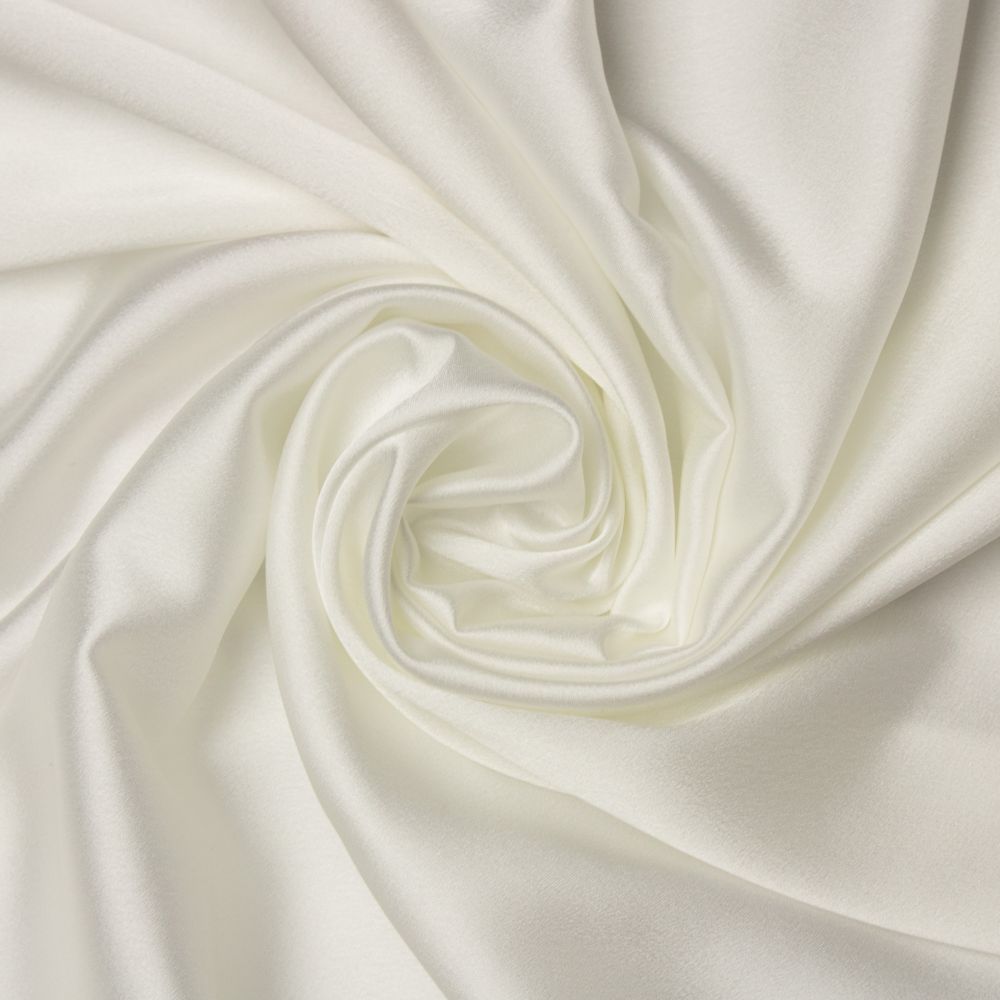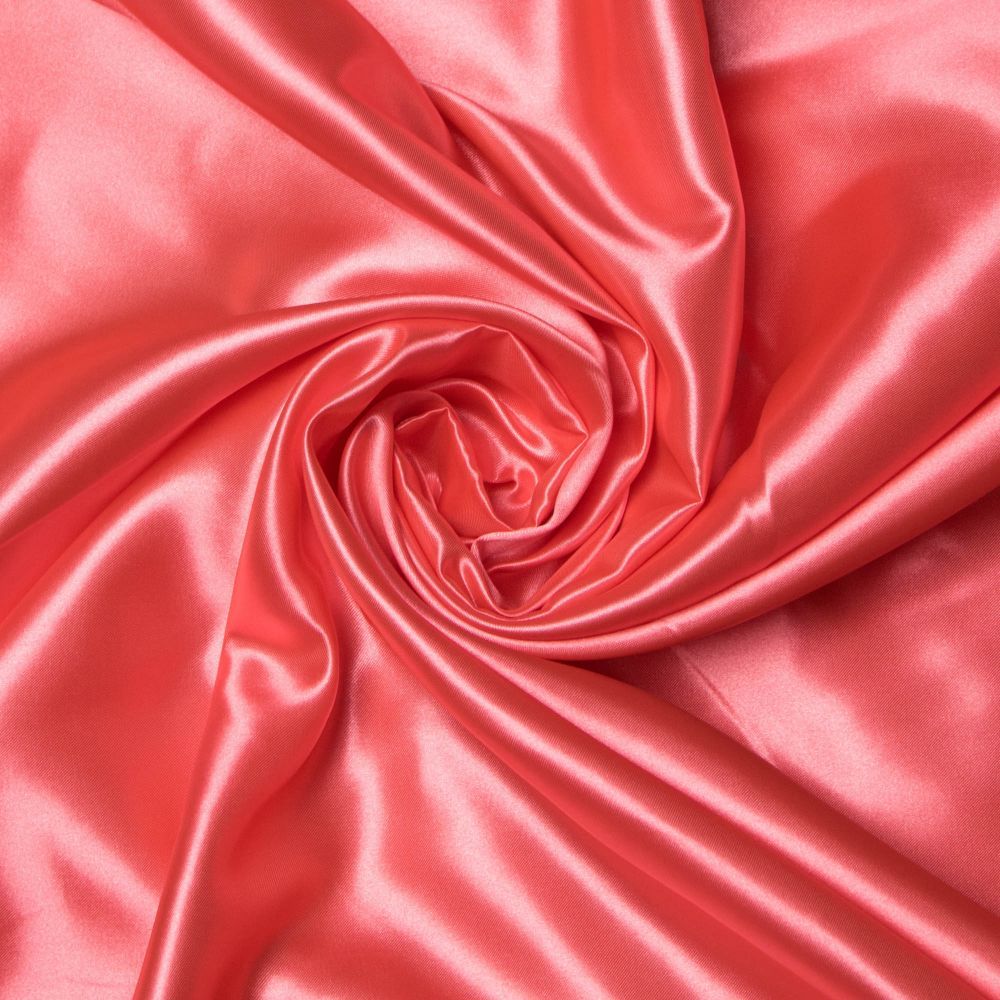Summary:
- Satin fabric is versatile and charming, adding a luxurious shine and sensuality to those who wear it;
- While commonly associated with party fashion pieces, satin’s elegance makes it suitable for daytime wear as well;
- Experience the perfect fit of your satin creations in a 3D environment. Sign up for the free trial of Audaces360 multi-solution now!

Chic, sensual, and exuding its own unique shine, satin fabric has a rich history to share. Renowned for its luxurious texture and elegance, it has been a prominent feature in both fashion and home decor for generations.
Originating in Asia and later introduced to Europe, satin quickly became the preferred choice for dressing royalty in the West, gaining popularity with advancements in textile technology.
From ball gowns to becoming a symbol of sensuality through the creation of lingerie, satin has played a leading role in fashion’s narrative.
While experiencing a more subdued period, satin has recently made a triumphant return as the star of various looks, effortlessly transitioning from party ensembles to everyday wear, adding a touch of sophistication to any composition.
Sumário
Are you interested in learning more about how satin is used in fashion? Read on to discover all about satin fabric and its versatile applications to boost your clothing production!
What is satin fabric, and how is it utilized in the world of fashion?
Satin is a fabric known for its lustrous shine and smooth, buttery texture, making it a popular choice for a wide range of clothing styles and occasions. Beyond apparel, satin also adds an element of luxury and lightness to decorative items, upholstery, and bedding, enhancing their overall appearance.
This exquisite fabric can be crafted from various raw materials, including silk, cotton, or synthetic fibers. Interestingly, many people are unaware that satin, despite its common association with material, is actually a weaving technique employed in the production of this fabric.
The glossy, shiny face of satin is the result of repeated interweaving of the warp yarn (running crosswise) and the weft yarn (running lengthwise). This weaving pattern remains constant, resulting in distinct and separate connection points.
Therefore, one side of the fabric showcases the dominance of the warp, while the other side emphasizes the weft.
The interplay of weaving techniques and materials culminates in the satin fabric we adore for its radiant sheen and soft touch.
Learn more: Discover the functionality and benefits of 3D fabric to fashion
What is the history of satin fabric?

The history of satin spans over 2,000 years and traces its origins back to China, specifically in Qhanzhou. It is believed to have derived its name from “Zaiton,” the Arabic name for the Chinese city, which eventually led to the term “satin.”
Interestingly, the Latin word “saeta,” meaning “horsehair,” might have also contributed to the nomenclature due to the fabric’s shine, resembling the fine strands of a horse’s mane.
Satin’s emergence can be directly linked to China, a land abundant in silk production, the primary material used in this luxurious weaving technique. Surprisingly, even peasant women were skilled in crafting satin fabric, making it accessible to a wider range of people beyond the upper classes.
However, as China’s satin-making expertise became known, it entered international trade through negotiations with countries in the Arab and European regions. Italy stands out as the first Western country to begin satin production in the 12th century.
Within two centuries, the popularity of satin spread like wildfire across Europe. By this time, silk had already gained a reputation as a precious and costly commodity, reserved exclusively for aristocrats and clergy.
The advent of satin offered an alternative to those who sought elegance and beauty without the exorbitant price tag of pure silk.
Throughout its long history, satin has remained an enduring symbol of refinement and luxury, adorning fashion and décor with its alluring shine and smooth texture.
Satin fabric in fashion
As satin’s popularity spread across Europe, the fabric found its way into various realms of fashion and decoration.
Notably, it gained prominence in furniture upholstery, adorning the opulent halls of the illustrious Palace of Versailles during the reign of Louis XIV.
During this era, satin also graced the costumes of nobility, featuring sumptuous and heavy dresses, particularly those designed for colder climates. The fabric exuded a sense of luxury befitting the aristocracy.
In the mid-19th century, satin took the bridal world by storm after Queen Victoria’s wedding, where she donned a stunning satin gown.
Despite not being a fashion icon of her time, Queen Victoria influenced the fashion trends of the Victorian era. Concurrently, satin also made its appearance in the world of ballet, adorning the pointe shoes of ballerinas with its radiant sheen.
Around the turn of the 20th century, the concept of lingerie as we know it today emerged. Interestingly, colored satin lingerie was initially associated with prostitutes, but its allure and appeal eventually transformed it into a mainstream part of women’s wardrobe.
With the advent of fashion advertisements, bras, panties, and corsets crafted from satin gained enhanced beauty and sensuality.
Satin fabric in decoration
Advancements in textile technology further propelled satin’s popularity, with the introduction of synthetic versions like rayon, making the fabric more affordable and accessible to a wider audience.
Throughout the 20th century, satin’s versatility continued to shine brightly in various aspects and it has ensured its continued presence as a symbol of elegance and sophistication in decoration as well.
Even today, satin is a great choice for pillow coverings, chairs, and various cushioned furniture. The supple and soft nature of satin also makes it a favored fabric for luxurious bed linen.
Learn more: Get a closer look at tulle fabric and its top types for your collection
What are the characteristics of satin fabric?
Traditionally, satin was crafted from silk, a natural fiber with long and continuous strands that, when woven together, create a fabric with both shiny and opaque sides.
In modern times, satin can be produced using a variety of raw materials, including wool and, more commonly, polyester.
Regardless of the material used, the production method remains consistent: fibers are interwoven in sets of 4, 5, or 8 threads, which directly influences the flexibility and texture of the final product.
This unique weaving pattern is what bestows satin with its attributes, such as its lustrous shine, lightweight feel, and sumptuous appearance.
What is the difference between satin and polyester?
As you may be aware, satin is a fabric production technique that can utilize various materials, including polyester.
From a technical standpoint, there is essentially no distinction between polyester satin and polyester itself (as a raw material).
However, when satin is crafted using other materials, such as silk, notable differences emerge in terms of the origin of the fabric, the inherent quality of the input, and the product’s final characteristics.
While polyester satin retains the glossy texture and luxurious feel associated with satin, satin created from other premium materials, like silk, may exhibit additional attributes of nobility and sophistication.
Surely, understanding these nuances allows discerning consumers to make informed choices based on their preferences and specific requirements when seeking fabrics with distinct qualities and characteristics.
Learn more: 9 fabrics with the perfect fit to use in your fashion collection
What are the types of satin?

There are several types of satin, each offering distinct effects and applications.
When choosing the right type of satin, it’s crucial to consider factors such as the desired fit, modeling, quality, appearance, and more.
But handling satin can be a bit challenging due to its slippery nature, requiring some practice to work with it effectively. Moreover, satin tends to highlight the body’s details, making precise modeling and sewing essential.
Here are some of the main types of satin:
Duchess Satin
A heavy and luxurious satin variety, duchess satin is popular for structured dresses, wedding gowns, and formal attire, thanks to its excellent draping and high-quality appearance. Often crafted from silk, acetate, or polyester, it is typically available in solid colors.
Polyester Satin
A more affordable alternative to silk satin, polyester satin is made from synthetic fibers. It retains the signature sheen of satin and is commonly used for various fashion pieces, including dresses, blouses, and accessories.
Antique Satin
As the name suggests, antique satin has a vintage and soft appearance due to its slightly muted shine. It is frequently used in historical costumes and vintage-inspired designs. Also called satin-back shantung.
Charmeuse Satin
A lightweight and lustrous satin variety, charmeuse is usually made from silk or synthetic materials. It is widely used for blouses, lingerie, scarves, and other flowing garments.
Silk Touch Satin
This luxurious and high-end satin is crafted from natural silk fibers, offering a smooth and opulent surface. It drapes beautifully and is often used in evening gowns, bridal wear, and other elegant garments.
Crepe-Back Satin
This type of satin features a crepe texture on one side and a smooth, shiny surface on the other. It offers versatility in design and is often used for reversible garments.
How to incorporate satin fabric into your fashion collection?
In the midst of a nostalgic wave sweeping through the catwalks and social media, numerous vintage elements have made a remarkable comeback in our wardrobes.
Satin, with its timeless allure, is no exception! Given that, ever since the slip dress trend emerged back in 2015/2016, satin has been preparing for its triumphant return – and the moment to shine brightly again has arrived.
Skirts, dresses, shirts, and blouses are among the key pieces that have taken center stage in this trend. Combining satin garments with other items crafted from more opaque fabrics, such as sneakers, denim jackets, and stylish accessories, creates a harmonious and balanced look.
Satin’s versatility extends beyond casual and party ensembles; it gracefully finds its way into homeware and sleepwear as well. Embracing satin in these settings adds an element of luxury and sophistication to relaxation and bedtime attire.
Whether you are designing for a fashion collection or seeking to update your personal wardrobe, integrating satin fabric opens up a world of elegance and versatility.
Its return to the spotlight showcases the fabric’s enduring charm and timeless appeal, making it a delightful addition to any fashion enthusiast’s repertoire.
Learn more: Uncover the benefits of fashion trend forecasting for your clothing business
Enhance your garment creation with Audaces and predict fabric fit digitally
Predicting the fit of fabrics, particularly lighter ones, plays a vital role in the initial planning of a fashion collection.
Thanks to cutting-edge software, designers can now streamline their production process, ensuring greater accuracy, speed, and cost-effectiveness. Let’s explore three Audaces software solutions and gain insight into their functionality:
Audaces Fashion Studio
Designed to enhance the creative process of fashion professionals, Audaces Fashion Studio offers a blend of speed and agility, revolutionizing the way you approach fashion production.
Intuitively crafted and user-friendly, this cutting-edge technology provides you with the freedom to work effortlessly in a three-dimensional environment.
Audaces Idea
For those seeking to enhance collaboration and communication between the Creation and Modeling sectors, Audaces Idea is the perfect software solution.
With its advanced technology, Audaces Idea offers a 360º view of a collection, empowering you to test different models, estimate costs, and seamlessly integrate technical drawings and tech packs.
Audaces 3D
As a powerful ally in fashion development, Audaces 3D eliminates the need for manual sample-making, revolutionizing the creative process.
Fashion professionals who embrace this technology can reap multiple benefits, such as:
- Streamlining the approval process for drawings and modeling;
- Confirming the perfect fit and wearability of garments before physical production;
- Digitally approving the first sample garment, reducing the need for physical samples;
- Saving time and costs associated with traditional prototyping methods;
- Embracing more sustainable processes in fashion production;
- Generating stunning images for Marketing and Sales purposes;
- Enabling a true online fitting room experience for customers.
Now that you’ve delved into the world of satin fabric, why not expand your knowledge of other fabric types? Download our free e-book today and elevate your fashion expertise to new heights!
FAQ
Satin is a fabric known for its intense shine and smooth, buttery texture, crafted from materials like silk, cotton, or synthetic fibers.
Satin features glossy (right) and dull (back) faces resulting from interweaving the warp yarn (crosswise direction) and weft yarn (lengthwise direction).
There is no distinction between polyester satin and the raw material itself. However, using other materials affects the fabric’s origin, nobility, and final appearance.










